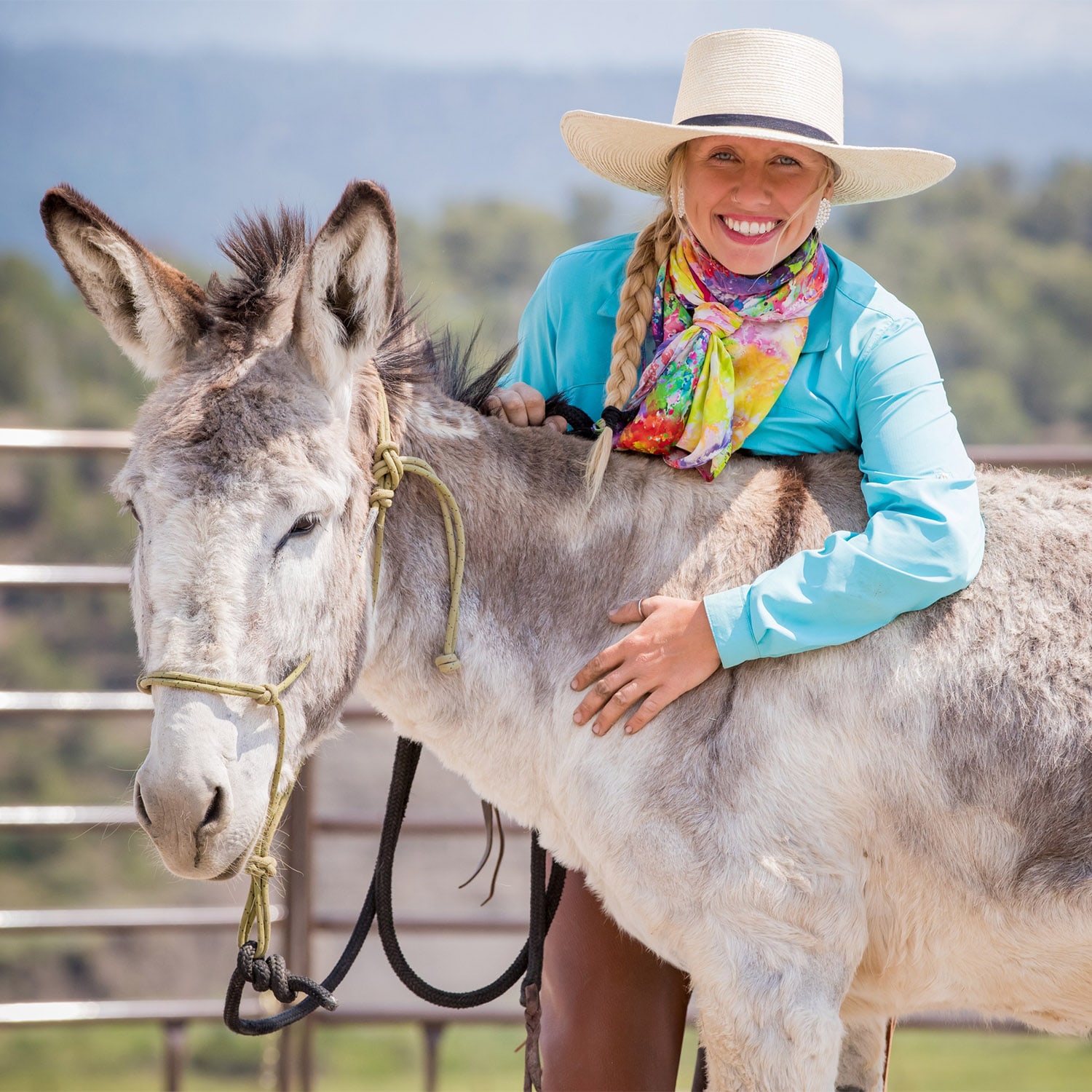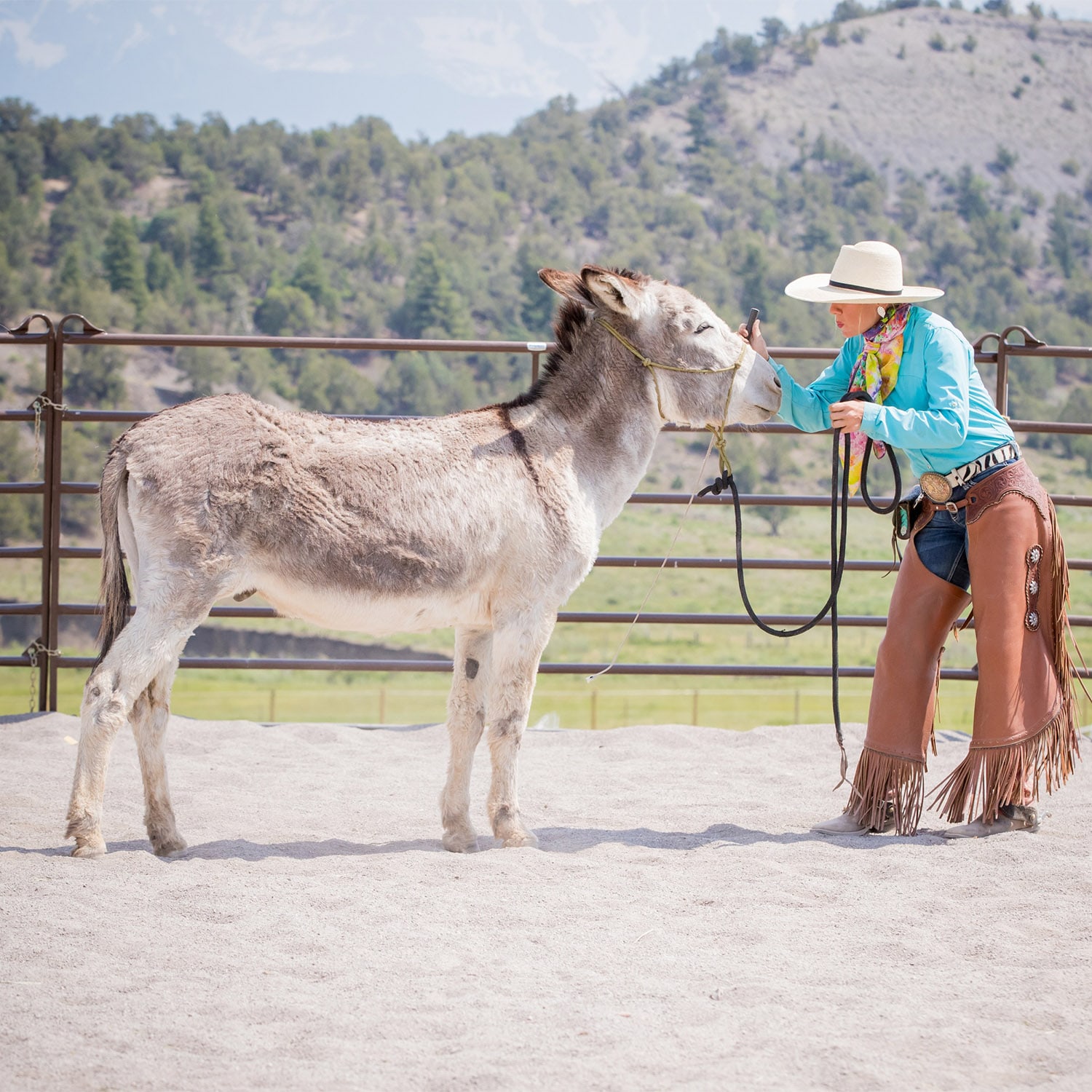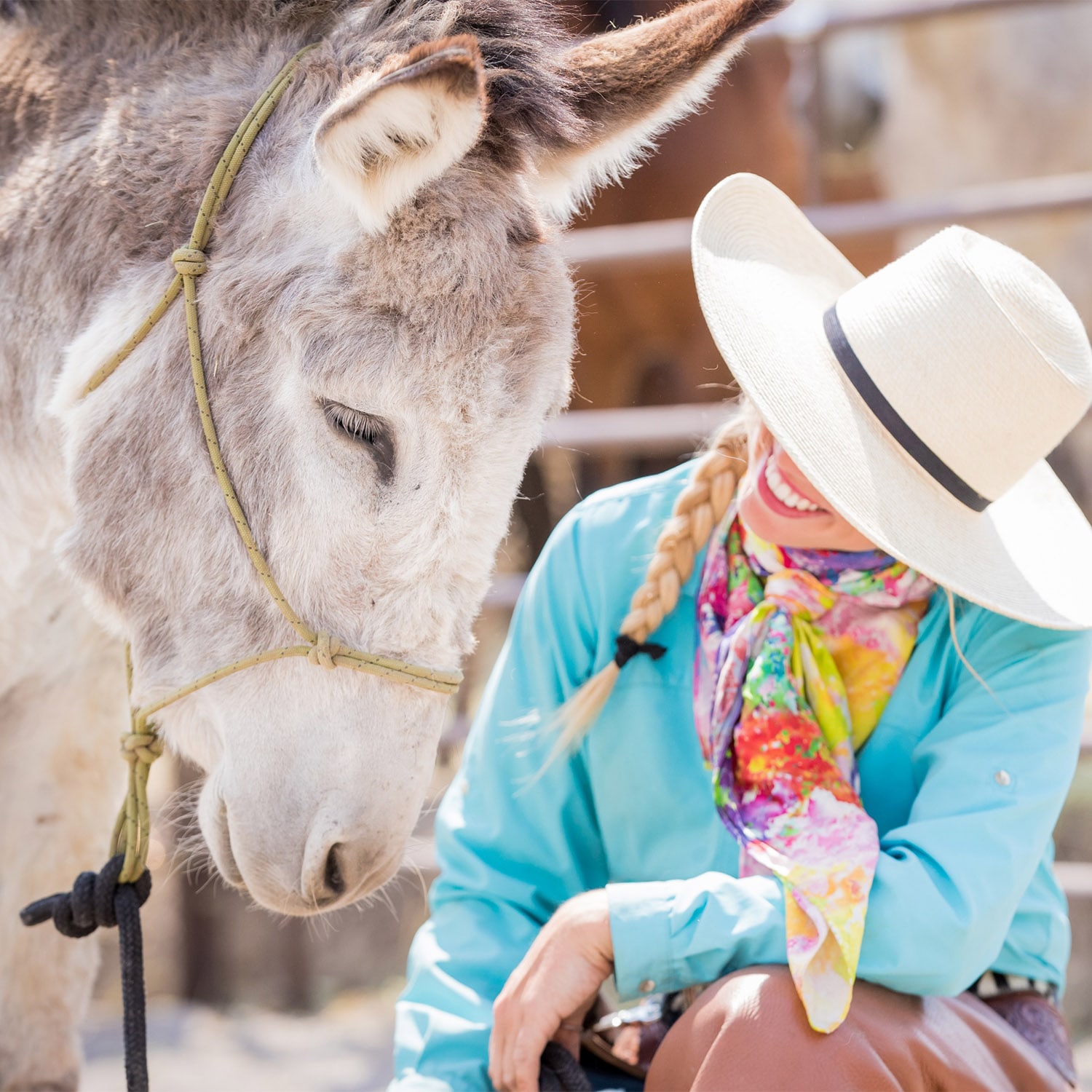
Question:
“What are two of the most common bad behaviors horse owners ask for your help correcting?“

Answer:
A few of the most common behaviors I am asked for help with include common issues such as buddy sour behavior, trailer loading, bolting, and bucking. But I would say that overall, my specialty is helping horses who have anxiety, tension, and trauma; which then leads to the behaviors. In other words, the horses’ emotions are the root cause; the symptoms can cause up in a variety of ways, depending on the horse and their situation in human care.
My really narrow niche is helping mustangs who failed conventional training and have developed PTSD like symptoms that their owners can’t seem to help them move past. So I have done much research in trauma–Both how to prevent it and how to solve it.
I believe these horses are actually the key to understanding every other horse’s emotions and bringing industry-wide change.
They are my prototype so to speak! Traditional methods are not effective with these horses, which can reveal to us the holes in conventional training methods and has caused me to question much of what we take as truth in horse training. Training zebras has helped me with this as well!
BONUS CONTENT: A Case Example
I am currently rehabilitating “Mystic,” a previously “untrainable, untameable” wild mustang and documenting the process on my new Youtube show, The Compassionate Cowgirl if readers would like to follow along.
Question:
“What are a few ways that horse owners can nip bad behaviors in the bud through positive methods rather than punishment?“
Answer:
Here is an excerpt from The 5 Golden Rules to the Horse-Human Connection course curriculum to answer this question:
One way to stop unwanted behaviors through positive methods rather than punishment is through something called differential reinforcement. Differential reinforcement is the process of reinforcing only the desired behavior and ignoring all other responses.
Before we get into the specifics, it’s important to understand that the more you focus on the behaviors you don’t want, the more you will repeat the negative thought patterns that have gotten you and your horse to where you are. Only through shifting your energy toward thinking about the behavior you do want can you welcome in new thought patterns that will start putting together a road map on how to get there.
Furthermore, if you focus on how to stop unwanted behaviors, you’ll likely resort to punishment. Focus on how to increase behaviors you do want and you’ll likely focus on reinforcement.
For example, say your horse is having trouble standing still. You become aggravated with his inability to stand still. You begin focusing on his pawing and his pacing. Oh, you just want him to stop moving! You jerk on the lead rope or the reins. Hold still, dang it! When you are focused on the behavior you don’t want, you will be more likely to use punishment.


Shift Your Energy
Instead, shift your energy and focus on what you do want. I want my horse to stand still. You may find rewarding yourself him when he stands still for just 3 seconds with positive reinforcement and then moving again. Offering him to rest for 5 seconds, reward him, then move again. You keep building this behavior until your horse is standing still. You may also consider the cause of the unwanted behavior in order to solve the problem instead of mask it now that you’ve shifted your perspective.
When you shifted your mind from focusing on what you didn’t want to what you did want, you were able to come up with a solution or a road map to get the result you were after. If you remain focused on what you don’t want, you will find yourself going to punishment most of the time. You will also miss the opportunity to reward small tries in your horse—all you see is what you don’t want!
The Two Specific Types of Differential Reinforcement:
01. Differential Reinforcement of Other Behavior (DRO) is a technique used to eliminate unwanted behavior through the alternative reinforcement of any other behavior but the unwanted one.
Consider talking to a friend who is a frequent user of gossip. If you’re tired of hearing the gossip, here’s how you can stop it using DRO: Ignore the gossip and reinforce any conversation that doesn’t involve discussion and judgments about others’ lives. Respond to gossip with no comment, a “Hmm” or an “Ah.” Respond with enthusiasm to all other comments regarding literally anything that isn’t a form of gossip; a comment about the weather, an inquiry about what you ate for lunch, or a discussion about a new book.
This technique was also used to help solve the issue of a dolphin I know of who was glued to the treat pouch of his trainers. The trainers felt they had tried everything, and became frustrated because nothing seemed to be working. Finally, they were able to apply DRO by reinforcing the dolphin for being anywhere in the pool and doing anything BUT hovering over the pouch. It worked like magic and pretty soon the dolphin abandoned the behavior of treat mugging altogether.
02. Differential Reinforcement of Incompatible Behavior (DRI) is a technique used to eliminate unwanted behavior through the alternative reinforcement of a specific, chosen behavior that is incompatible with the unwanted one. The helpful formula for identifying the DRI is to think: “A horse can’t be doing [insert unwanted behavior] while you’re asking them to do [insert DRI].” A great example of the DRI in action is working with a horse that wants to barge through the gate when you are leading a different horse out.
I had a particular issue with Zeus, my young male zebra, displaying such behavior. I would go into the pen to get a horse to work with and he would immediately race towards me and badger the other horse. If he allowed me to get the halter on the horse, he would then follow us a bit too close for comfort to the gate that leads into the roundpen. Eagerly awaiting his turn for training, he would try to rush through the gate, oftentimes making the horse I was leading nervous. Even hearing the sound of the gate opening was enough for Zeus to appear out of nowhere in an attempt to squeeze through. As much as I set a boundary with the whip, Zeus still continued to display this behavior.
When I shifted my mind to thinking about what I DID want (Zeus to stand still while I haltered a horse and walked through the gate) instead of what I DIDN’T want (a gate barging, horse badgering zebra), the solution became clear. The solution was to provide a mat for Zeus to stand on while I haltered and led the horse out. As long as Zeus was on the mat, he couldn’t be badgering the horse and barging through gates. Staying standing on the mat was the DRI. This worked like a charm, and now I no longer have to worry about a zebra pestering my other horses or rushing through gates! The DRI also works for helping people solve their unwanted and unhealthy habits. Consider breaking the habit of smoking.
According to Alan Cohen, life coach extraordinaire and author of A Course In Miracles Made Easy, clients come to him all the time saying they’ve tried to quit smoking repeatedly with no success. His advice? When you try to get rid of something you focus energy on the unwanted behavior, which feeds and expands it. Instead, focus on doing more of the activities you enjoy.
A Word of Caution
A word of caution on the application of using differential reinforcement (especially DRI) is that you want to try to ask for the DRI before the unwanted behavior presents itself. Otherwise, you could accidentally reward the unwanted behavior! For example, if my zebra, Zeus, attempts to rush through the gate and then I ask him to go to his mat (which he loves), he will be reinforced for his attempt (this is due to something called the Premack Principle). The only exception to this is if the unwanted behavior is self-reinforcing. If so, the animal is receiving reinforcement with or without the addition of the DRI. In this case, it’s ok to ask for the DRI to stop the self-reinforcing behavior from escalating. Take this as feedback, and the next time, try to set the horse up for success by setting up the environment differently or easing your expectations.

